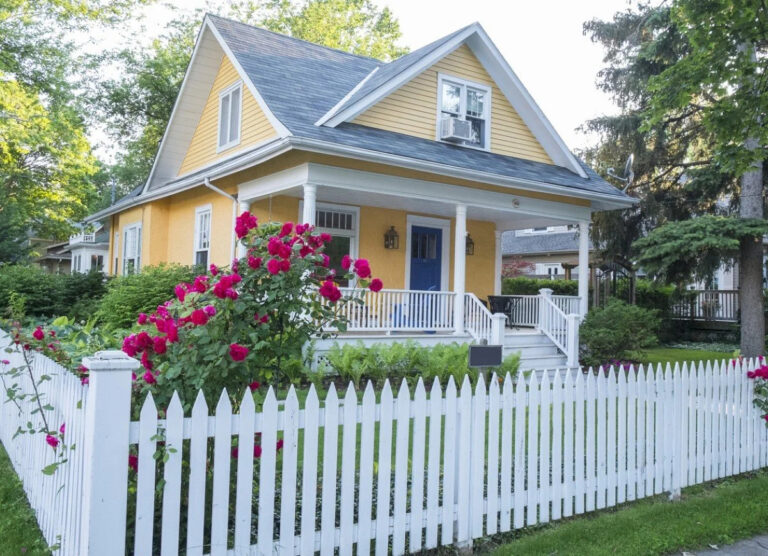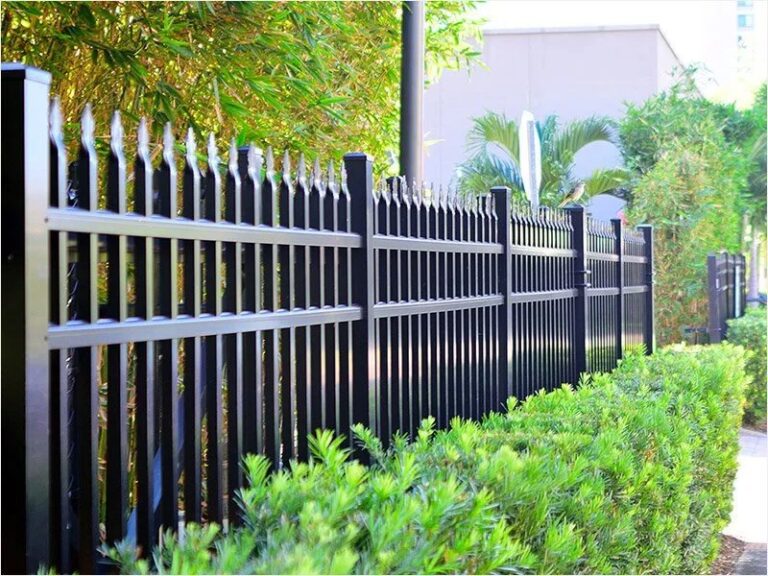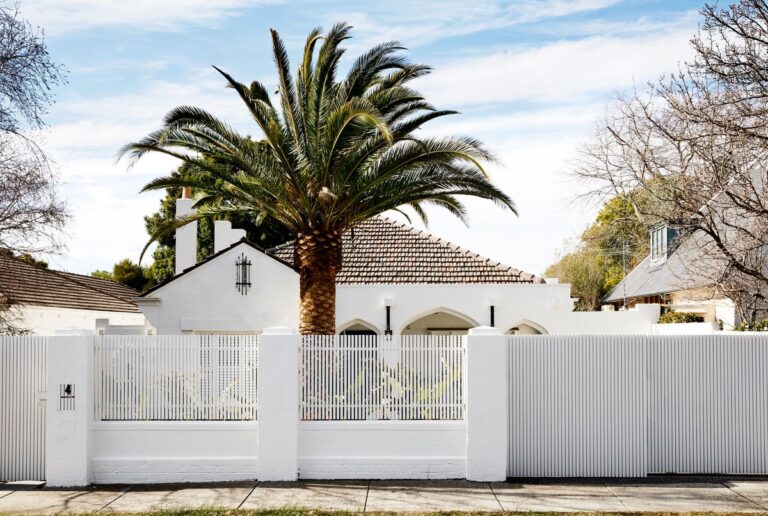Choosing the right fence color is crucial for enhancing the aesthetic appeal of your property and can greatly affect the overall look of your outdoor space. The color of your fence should complement the exterior of your home and blend well with the surrounding landscape, creating a cohesive and harmonious look.
Factors such as the architectural style of your home, the existing color scheme, and the overall ambiance you want to create should all be taken into consideration.
With the right color choice, you can create a welcoming and visually appealing outdoor environment that adds value to your property.
We will explore the art of choosing fence colors and provide practical tips to help you make the best decision for your home.

Understanding The Impact Of Colors On Fences
However, the process of selecting and installing the perfect fence goes beyond just color choices.
It’s essential to consider the quality and expertise involved in fence installation. For those living in and around Vacaville, consulting with experts at Fence Vacaville can provide valuable insights.
These professionals offer a wide range of fencing options, ensuring that both the color and the structure of your fence are in harmony with your home’s aesthetic and functional needs.
Psychological Aspects Of Color Choice
The colors we choose for our fences have a deep psychological impact, influencing the way we and others feel and behave.
Warm colors like red, orange, and yellow can create a sense of energy and warmth, while cool colors such as blue and green can induce calmness and relaxation.
It’s essential to consider the emotional response different colors evoke when selecting a fence color, as it can significantly impact the overall ambiance of the property.
How Different Colors Can Enhance The Look Of The Fence
Color plays a vital role in enhancing the aesthetic appeal of a fence.
Bold, dark colors like black or deep brown can add a touch of sophistication and elegance to the property, while lighter, neutral tones like white or cream can create a sense of openness and airiness.
Understanding how different colors interact with the surrounding environment and architectural features is crucial in choosing a color that not only complements but elevates the overall look of the fence and property.
Considering The Architectural Style Of The Property
When selecting a color for a fence, it’s essential to take into account the architectural style of the property.
For instance, traditional homes may look best with classic, neutral colors, while modern properties can often benefit from bold and striking hues.
The goal is to select a fence color that harmonizes with the architecture, enhancing the property’s visual appeal rather than detracting from it.
Factors To Consider When Choosing Fence Colors
Climate And Environmental Factors
Consider the climate and environmental factors when selecting the color for your fence.
For instance, warm and sunny regions may benefit from lighter colors that reflect sunlight, while darker shades can absorb heat, suitable for cooler climates.
Existing Landscape And Outdoor Decor
Assess the existing landscape and outdoor decor. The fence color should harmonize with the overall aesthetic of your property, complementing the colors of your garden, patio, and any outdoor furniture.
Neighborhood Guidelines And Regulations
Ensure compliance with neighborhood guidelines and regulations when choosing fence colors.
Some areas may have specific restrictions regarding color choices, ensuring the fence blends in with the community’s aesthetic.
Tips For Selecting The Perfect Fence Color
When it comes to selecting the perfect color for your fence, there are several important factors to consider.
Choosing the right fence color can enhance the overall aesthetics of your property and complement the existing architecture. Here are some valuable tips for selecting the perfect fence color:
Using Color Samples And Visualizing The Outcome
One effective way to choose the ideal fence color is to utilize color samples. Obtain samples of different hues that catch your eye and assess how they look in the context of your property.
Hold the samples against your home’s exterior or landscaping to visualize the outcome. This allows you to determine which colors complement the existing elements, creating a cohesive and visually appealing look.
Testing Colors In Different Lighting Conditions
It is essential to test the selected colors in various lighting conditions. Natural light, as well as artificial lighting in the evening, can significantly alter the appearance of the chosen colors.
Consider how the colors look during different times of the day to ensure that the fence will maintain its visual appeal under all lighting conditions.
Seeking Professional Advice And Considering Long-term Maintenance Aspects
Consulting with a professional color specialist or a fencing contractor can provide valuable insight into choosing the right fence color.
They can offer suggestions based on their expertise and help you consider long-term maintenance aspects such as fading durability, and the overall impact of the chosen color on your property.

Frequently Asked Questions
How Do I Choose A Fence Color?
Consider your home’s exterior and surroundings. Choose a fence color that complements the overall aesthetic.
Take into account the style and color of your home as well as the landscaping. Neutrals like white, gray, or brown are popular choices. Sample different colors to find the perfect match.
What Is The Most Popular Fence Color?
The most popular fence color is white. It is a versatile and classic choice that complements various architectural styles.
What Color Fence Is Least Noticeable?
The least noticeable fence color is usually a dark shade like black or dark green. These colors blend in well with the surroundings and minimize visual impact for a discreet appearance. Choosing a color that matches the background can help the fence fade into the landscape.
Conclusion
In creating the perfect fence color, take into consideration your surroundings, architectural style, and personal taste.
Choose a color that complements your landscape and enhances curb appeal. By carefully selecting the right color, your fence can be a focal point that adds beauty and value to your property.
Don’t rush this decision, as the right fence color can truly make a difference.







